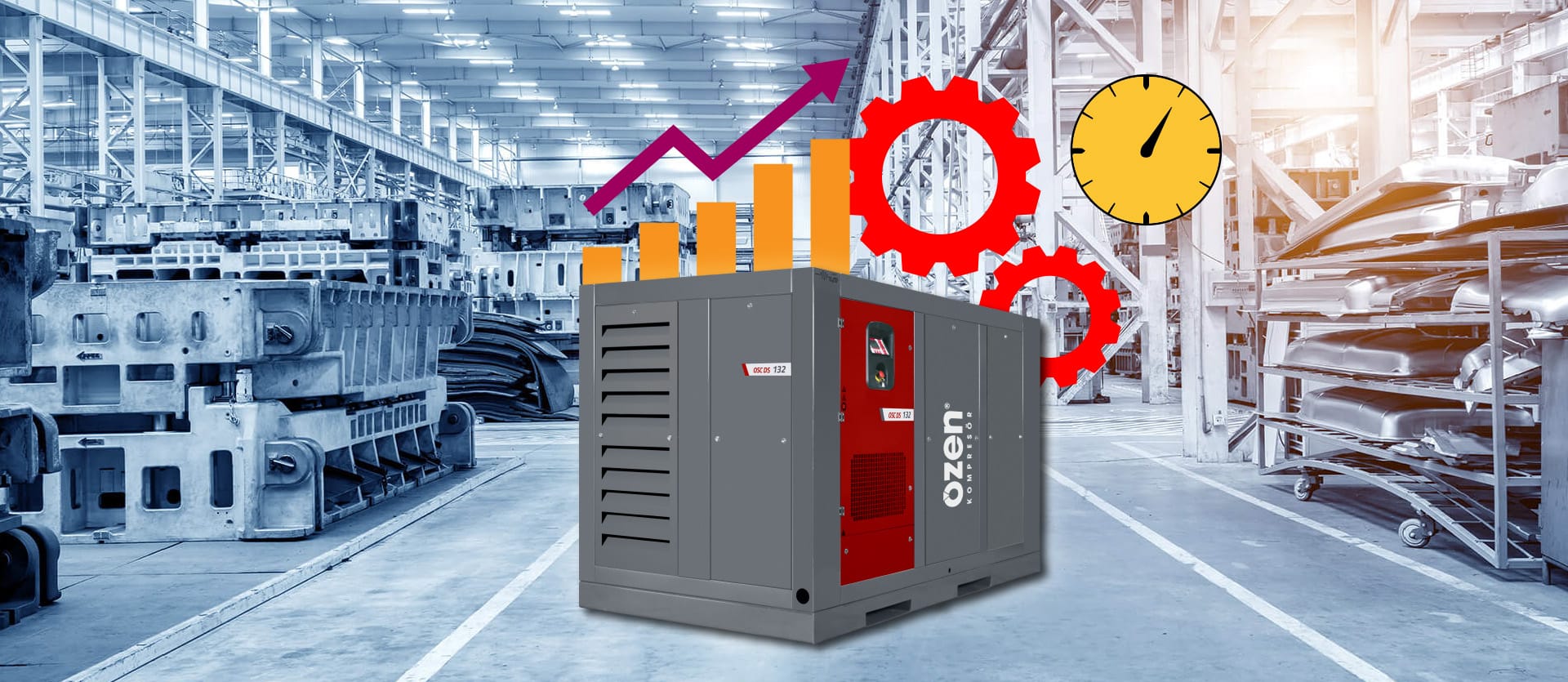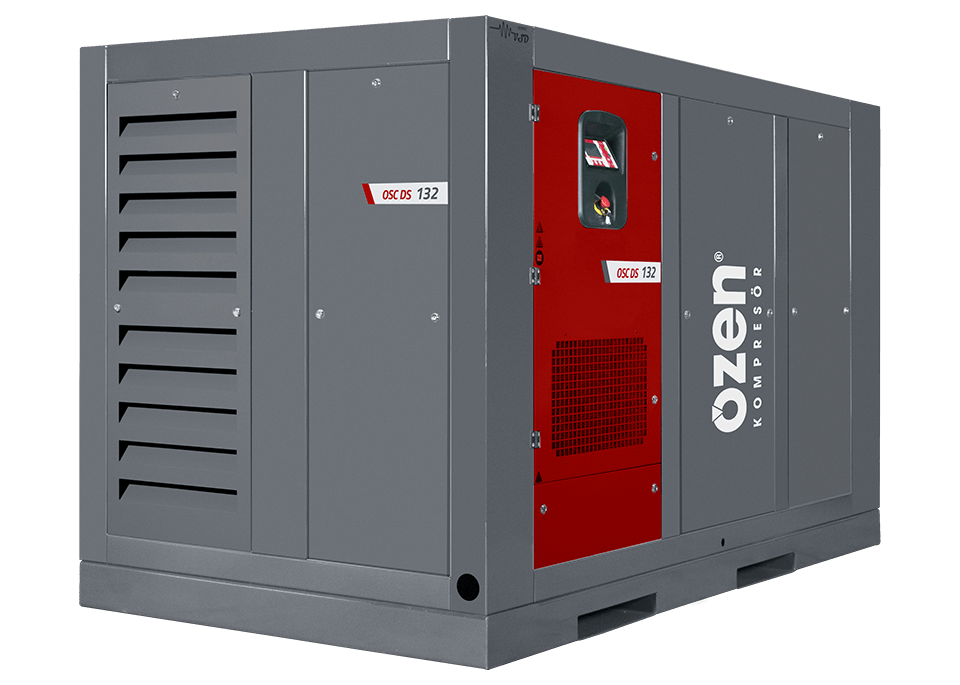Energy Efficiency In Compressor Systems
20 April 2022, Wed

Today, the global economy and increasing competitive conditions force the industrial enterprises to reconsider "Energy Costs". As a result of rising fuel prices and high energy costs and rising awareness about this issue, businesses are aware that they do not have the luxury of consuming fuel with no purpose. Energy saving is not reducing the amount of energy used, but the reduction of energy consumed per product without sacrificing the requirements and the quality. Energy saving is a set of measures which are taken to identify unnecessary uses of energy and to minimize or completely eliminate waste. Accordingly, before starting energy saving operations, enterprises should carry out energy audit work in order to determine their current situations and route energy policies as a result of analytical measurements and accurate analyses. By using energy wisely and minimizing losses, industrial plants or industrial enterprises in the manufacturer positions will produce the same amount of goods or services with less energy or increase their competitiveness nationally and internationally by producing more goods and services with the same amount of energy.

In compressor systems, energy efficiency is taken into free air tanks and the air tank is reduced volumetrically with the compressor or accelerated on a molecular basis and the necessary pressure is obtained. Compressors which constitute this entire system are classified under two titles according to the mechanism for increasing the pressure of the air: Positive displacement and dynamic compressors. An optimum compressor is designed by determining the installations such as all of the ancillary equipment, designing, transporting, making corresponding flow and pressure adjustments according to the intended use of air that can be stored by increasing the pressure. In general, ancillary equipment are such:
- Filtering equipment
- Separator equipment
- Dryers
- Systems that control pressure and flow
- Tanks
- Distribution and evacuation installations of compressed air systems
Efficient Design of Compressed Air Installation
Almost the only reason for high energy bills is the insufficiency of compressed air installation of the compressor. The compressed air installation basically has three features:
- It keeps the pressure loss between compressor and consumption point low
- It minimizes leakage in the installation
- It allows the condensate to be separated efficiently
These three tasks are valid when it is planned how much compressed air will be consumed. How to make this plan? It is done by generating a feasibility of what to do with the compressed air when making the installation. Efficient and safe production of compressed air is also important for reliability. For reliability, planning the pipeline is very important. Even if practical compensations are made during use, these situations increase the cost and cause you to face unexpected production results since the pressure at the point of production and consumption will not be at the desired levels. The solution required to minimize the pressure loss at the compressor and consumption point is to design the pipe system in the form of a closed cycle. The region that this design will be applied is the region where air consumption takes place. From the ring-shaped design which is applied in this region, the pipelines separated in the form of branches go to the consumption points and thus a balanced air pressure is obtained. If air is required to be transported from the existing system to a remote area, separate air systems must be installed for this.
How to Recover Waste Heat?
When obtaining compressed air in pneumatic systems, electrical energy is used. Approximately 85-90% of the consumed electrical energy when obtaining compressed air is converted into heat energy. The recovery of the resulting heat energy also provides energy efficiency. A design for the use of waste heat can be made in place of heat sources which are used for heating purposes in production. When determining how efficiently the recovered heat energy can be used, the temperature levels calculated according to the amount of heat also give an idea of the reusing areas. Compressor's oil, cooling water or heat from hot air can be used for the following purposes:
- Comfort heating
- Furnace burning air
- Boiler combustion air
- Preheating of feed water
- Heating the process
However, it is important to consider the presence of oil and dust particles that may be transmitted from the compressor surface during use. The thermal load that arises in the cooling processes of refrigerated compressors is not thrown into the atmosphere, but can be used for the same purposes by being raised to a higher temperature with the help of a heat pump.
How to Prevent Leaks?
The most important loss of leakage is the loss of energy. Energy loss which is caused by friction in elbows at ports, in filters where flow is filtered, in valves where flow rate adjustment is made, inside the pipes, is maximum 10% in efficient systems. The simplest method to maintain energy efficiency in pneumatic systems is to carry out a leakage control. This can be easily measured by pressure and other data in the compressor outlet. By identifying, measuring and repairing the leaks by understanding the cause of the leak, the operation time of the compressor in the process is reduced. It also prevents pressure fluctuations. Pressure fluctuations decrease the efficiency and quality and cause potential halts.
Long-lasting maintenance processes are minimized. Especially in noisy environments, various devices are needed since the air leakage is very difficult to understand. These devices detect the leakage and also measure the severity in decibels. This measurement also gives information about the energy that the compressor spends by compressing the unit of air. Therefore, the power loss which is caused by the leakage can be easily calculated. As soon as the leakage is resolved, this loss of power will also be eliminated.
